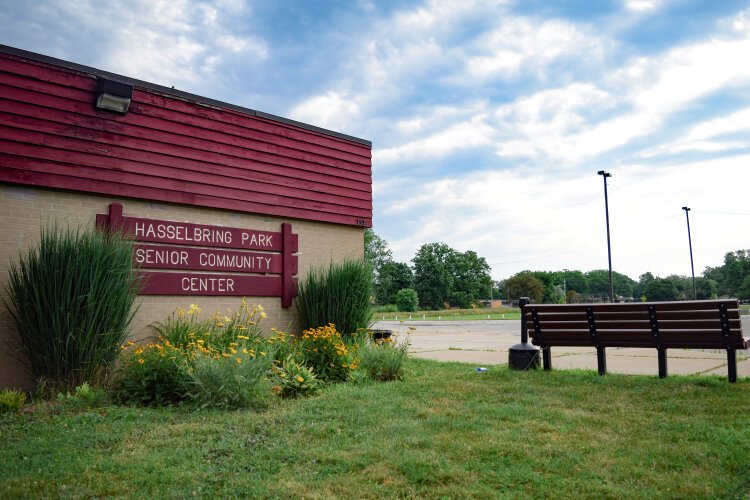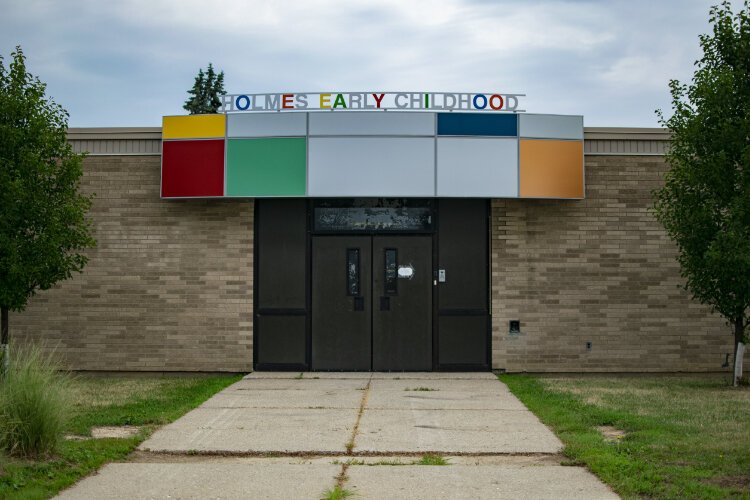How Brownell-Holmes residents defined their Flint neighborhood on their own terms
Brownell-Holmes and its residents are one and the same. Thanks to their sense of community and dedication to their home, these residents have been able to prosper while much of the northside of Flint struggles.

FLINT, Michigan — Although it was originally a subdivision of the larger Bel-Aire Woods neighborhood, Flint’s Brownell-Holmes neighborhood was not founded by a zoning commission or a land developer. Rather, its origins lie in the actions of community members eager to take the small northside neighborhood’s needs into their own hands.
According to local Flint historian David White, Bel-Aire Woods, like many other northside neighborhoods were developed post-WWII. By the late ’70s, the area was experiencing a mass exodus of residents. While it was once home to many upper-middle-class General Motors (GM) workers, the neighborhood was now facing serious financial hardship.
A similar story played out across many north Flint communities. In Bel-Aire Woods, however, the challenges drew residents closer together and prompted them to create a culture of communal responsibility for their neighborhood.
One of these residents, Jeanette Edwards, has lived in the area since the ’80s.
Edwards witnessed the north side of Flint crumble as a product of decades of economic instability and social injustice. Gun violence, blight, and break-ins all rose during the late ’70s and early ‘80s, when GM started closing plants and laying off thousands of workers.

Although she was born in Arkansas, Edwards grew up in the nearby Beecher community, minutes away from where she lives now. When the moment came for her and her family to look for a new home, Brownell-Holmes ticked all the boxes.
“At the time I couldn’t drive and (my husband) worked second shift,” Edwards says. “There were three schools nearby and I felt like I could walk my kids to school if he was at work. We searched quite a while to find the right area.”
Edwards remembers what she describes as the neighborhood’s worst period, in the late 2010s. During that time, she says, “it seemed like the whole of north Flint [was] getting left out. People would come in for a project and then they were gone. They would come in and survey us, get our answers, and they were gone. So we just had to take our neighborhood into our own hands.”
After years of working as a paraprofessional at the two local schools, the area would soon be named after, Brownell Elementary and Holmes Elementary, one day Edwards came across a sight that would eventually lead to the formation of the Brownell-Holmes community.
“I had seen in another neighborhood some flower pots with a lot of pretty flowers. I was at a meeting and I said, ‘Why can’t our area get a lot of those pretty flowers?’” Edwards says.
Bethany Collins of the federal Building Neighborhood Capacity Program told Edwards that if she wanted to procure anything that could be displayed on city streets or if she wanted to apply for grants to help with the costs of such a project, she would first need to start her own block club.
“It was easy,” Edwards said. “All we had to do was have our block club meeting, … meet with everybody, and decide what name we wanted. So we just went down to the city and filled out the papers.”

Soon after that, Edwards put together fliers to hand out through the community announcing the first meeting for what would eventually be called the Brownell-Holmes Neighborhood Association (BHNA). At that first meeting, only two people showed up.
“I was like, ‘Oh my God, is this what’s gonna happen?’” Edwards says. “The next month we passed out fliers again and this time about five people came.”
With the help of those who came to the first and second meetings, the BHNA grew to 25 members three months later. When it came time to name the association’s first president in 2017, Edwards won by a unanimous vote.
Community members continued to join the BHNA. Before the COVID-19 pandemic, meetings were averaging 35 to 60 attendees.
Edwards has made it a point to identify and fix every complaint she receives from community members. In the three years since the BHNA’s founding, members of the association have undertaken grant writing projects to fix city streets, place new sidewalks to make it safer for kids to walk to school, and plan community-wide events like Tales from the Hood.
According to Edwards, the fact that Brownell-Holmes sits on the outskirts of the city, combined with its large number of community-oriented residents and the presence of two schools, meant crime in the immediate area was always relatively low when compared to the rest of Flint’s northside.
Other community members noticed the neighborhood’s unique position early on and have always made it a point to be active in the community long before BHNA’s founding.
BHNA vice president Phillip Kimble has lived in Brownell-Holmes since 1976.
“It’s a big pride to me,” Kimble says. ” … All my children, they grew up here. I got remarried and my wife’s children, they grew up here too.”
Throughout Flint’s hardships in the last 40 years, from the city’s economic downfall to the Flint water crisis, Kimble says neighborhood residents have “strived to keep Brownell-Holmes going.”
One way he and other community members have done this is by supporting the local schools as much as possible. According to Kimble as well as Edwards, making sure kids get a quality education at Brownell STEM Academy and Holmes STEM Academy has been one of BHNA’s goals from its founding.

Edwards says being able to work closely with children her whole life has taught her how easy it is for them to turn to crime under the wrong circumstances.
When she first started BHNA, Edwards told the group “my passion is working with the kids … in order to get the kids to stop doing certain things, we need to get involved with the children here in these schools. That way they know to stop some of their bad behaviors.”
Despite the COVID-19 pandemic bringing much of the world to a halt, Edwards, Kimble, and other members of the BHNA have continued to operate, fighting blight and hosting socially-distanced events like picnics.
Though COVID-19’s social and economic effects are already starting to show throughout the city of Flint and the rest of the world, Edwards seems certain the people of Brownell-Holmes will continue to do what they’ve always done: take care of each other and their neighborhood.
“We’re like a family in this area,” Edwards says. We have the same goals: we want our neighborhood to be safe and clean. We will continue to make sure we do what it takes to make that happen.”






